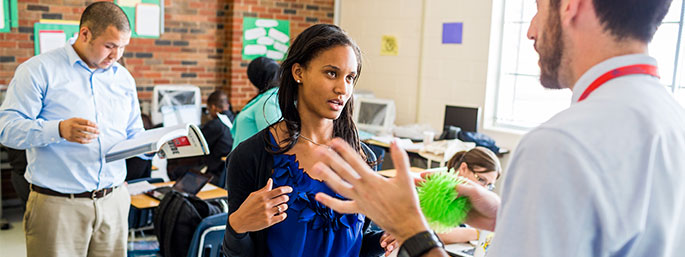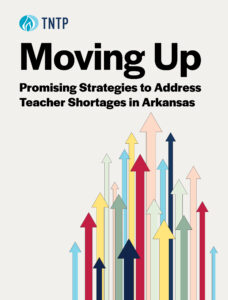When I was a school leader, I always tried to minimize the number of new teachers that I hired, since they were never well-prepared for the reality of teaching in my urban, under-resourced school. Whether coming from Columbia University’s Teachers College, Teach For America (full disclosure: I am an alumna of both), or another program, a new teacher would demand a ton of time, support and development—and there was always a risk that he would struggle and leave.
That was 10 years ago. Last week, I spoke to a Florida principal who complained of the same thing: Few new teachers are prepared for the reality of her challenging urban school. In education, we have just come to expect that hiring first-year teachers is like an episode of Survivor, where only a few survive and thrive. We can do better.
At TNTP, we see things differently. We view the first year of teaching as a period of rapid growth, where teachers start by mastering the basics and quickly develop toward excellence. In Fast Start, a new paper about our TNTP Teaching Fellows pre-service summer training program, we explain how we’ve shifted away from theory and covering a breadth of information, to focus Fellows in-depth on a narrow set of critical skills. It’s an approach we hope will inspire similar shifts across the field.
Creating training like Fast Start means taking a stand on what new teachers need to know and in what sequence, and making sure they actually know it. It’s not easy—most preparation programs touch on lots of different topics, with the assumption that teachers will select the right ideas and find their own style. By contrast, Fast Start rests on three core principles: Focus on a narrower curriculum of proven foundational skills, active, repeated practice and detailed, in-the-moment feedback on how to improve.
What did these changes mean for us in practice?
- Less is more. Using data from multiple school districts, we identified four key skills that have the strongest links to first-year teacher performance. Then we designed our summer training to prioritize practicing the techniques that would lead new teachers to master those specific skills.
- Sequence matters. Prioritizing those four skills doesn't mean that we think other things aren’t important. Rather, we have established a sequence of skill-building that we feel will best prepare candidates for a strong start, so they are well-positioned to develop new skills over the long term.
- Practice makes perfect. In addition to the time they spend teaching in real summer school classrooms, our candidates are now given at least 26 hours of structured practice in those critical techniques. That meant changing how we prepare our training staff too, so that they were ready to give candidates plenty of actionable feedback on how to improve and get these skills right.
The challenges we faced in overhauling our preparation will be familiar to other training programs throughout the country. And we still have a great deal to figure out. Yet, we hope the lessons we offer in Fast Start, and our earlier paper on first-year teacher development, Leap Year, offer a potential model for the way forward.
First, we hope to encourage more focus on practice over theory. We found that our teacher candidates can improve dramatically on the essential skills during pre-service training if given sufficient opportunities to practice. Watching a video or reading about a technique isn’t enough, they have to do it.
Second, we hope more programs will develop a clear point of view on the skills that new teachers must demonstrate before entering the profession—and hold off on certifying candidates who don’t. Early results from Fast Start show that candidates who performed well on our essential skills during pre-service training were more likely to receive favorable evaluations (either using district evaluation models or our own certification bar) at the end of the year. In our first year of Fast Start, TNTP recommended only 66 percent of participants for certification.
Right now, policies that prioritize program completion over demonstrated effectiveness encourage all programs—traditional and alternative alike—to recommend candidates for certification who aren’t ready to teach. This perpetuates a “first year is the real training year” mentality, which puts students in those teachers’ classrooms at a disadvantage, and puts the burden on schools and school leaders to train new teachers.
Finally, we hope that our efforts to try a radically new approach to teacher training will inspire more innovation across the sector. While we think the results of Fast Start are promising, we certainly recognize that this may not be the answer for everyone. We made some choices that reasonable professionals could debate. But we all recognize that new teachers are not well prepared for the reality of the profession now. Rather than continue to accept this as a necessary rite of passage, let’s try some new ideas and do a better job by our new teachers.
Read our paper, and let us know what you think.








